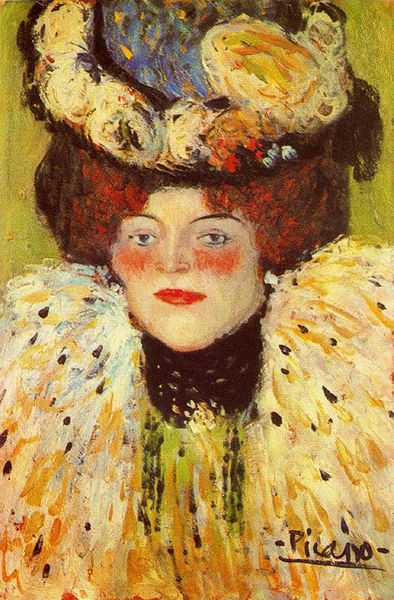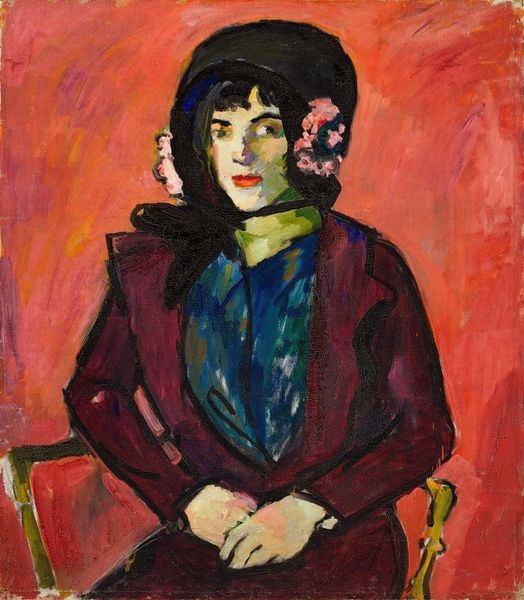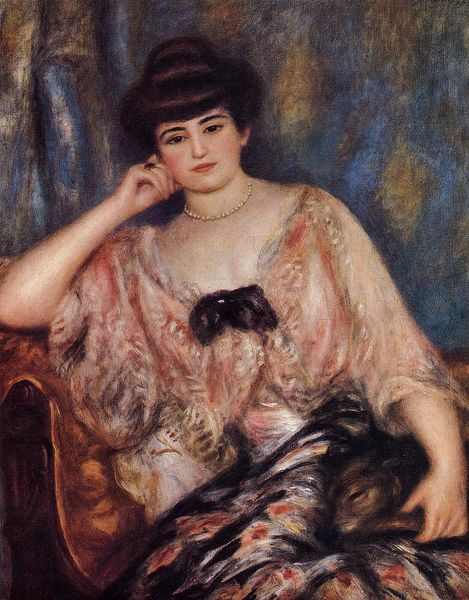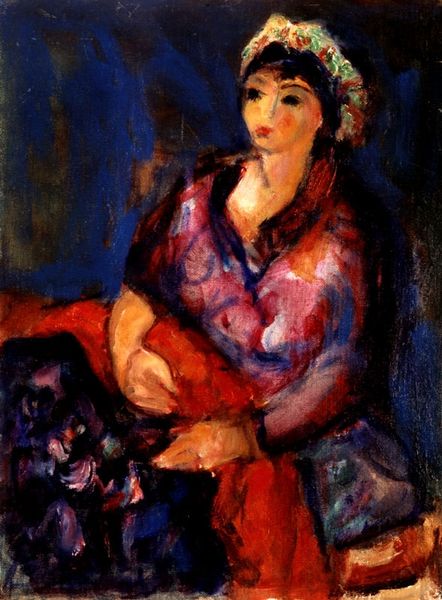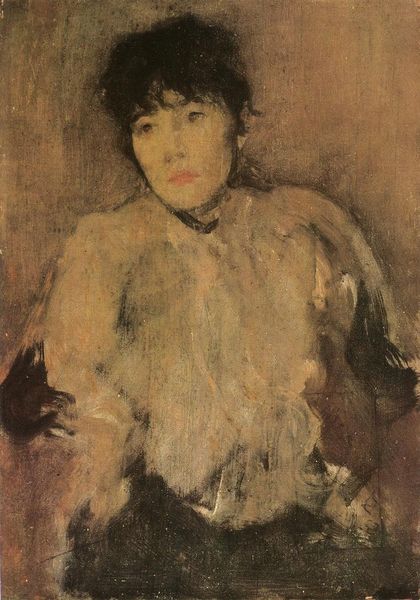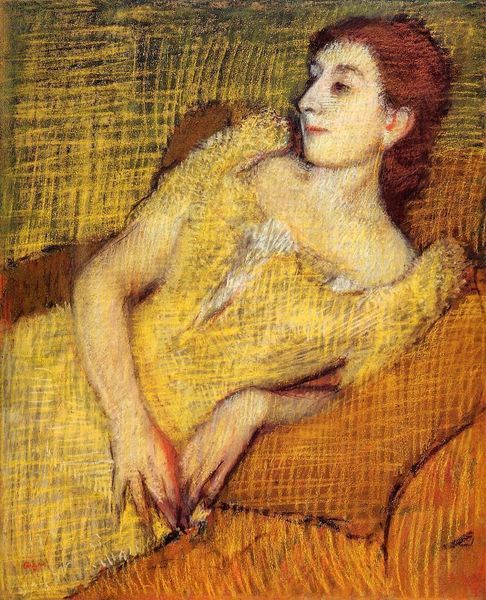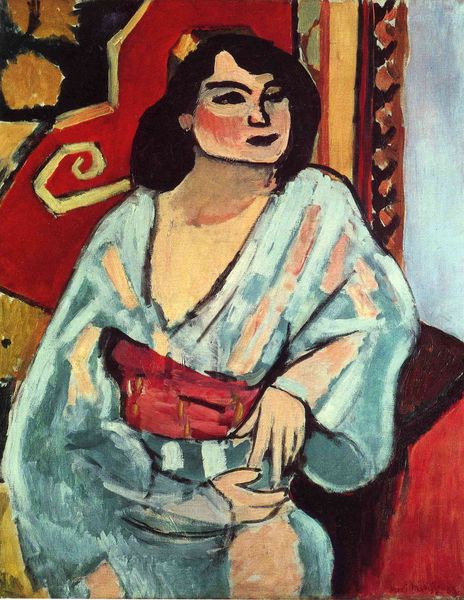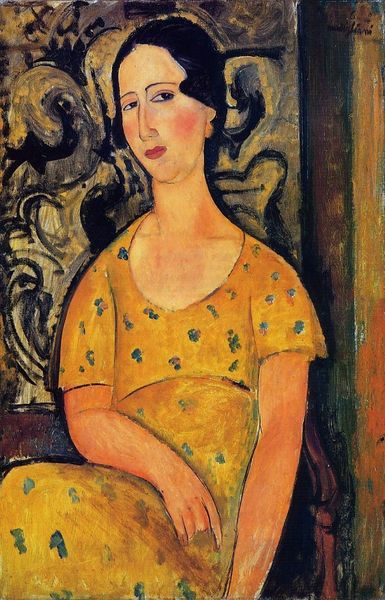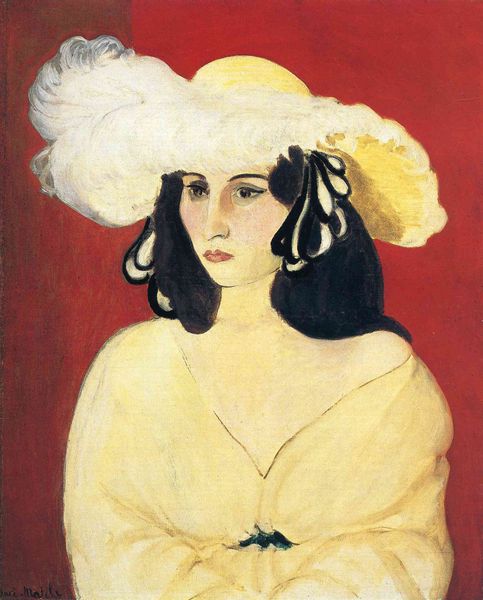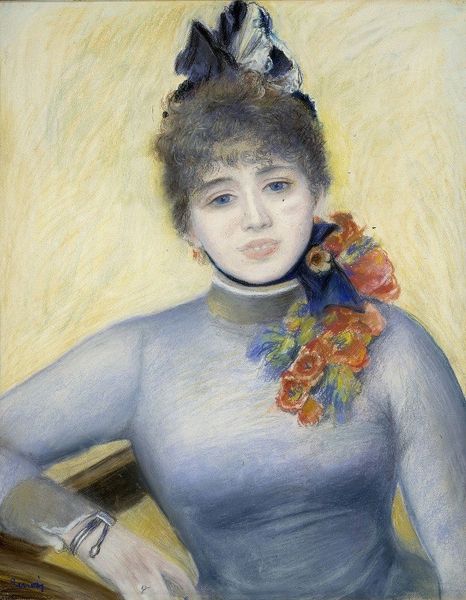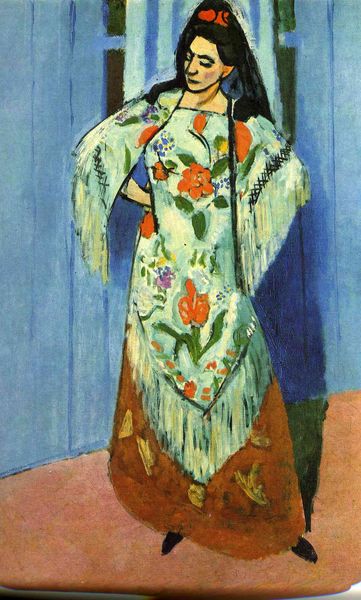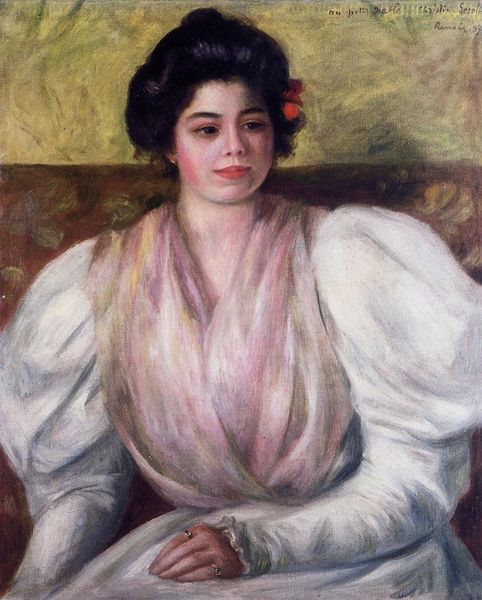
oil-paint
#
portrait
#
art-nouveau
#
oil-paint
#
oil painting
Dimensions: 108 x 100 cm
Copyright: Public domain US
Editor: We’re looking at František Kupka's "The Gallien Girl" from 1910, rendered in oil paint. I find her gaze quite arresting. It's such a stylized portrait, almost theatrical. What stands out to you? Curator: Well, considering the period, I'm intrigued by how Kupka seems to be consciously constructing an image, not just depicting a likeness. Look at the exaggerated features, the almost mask-like quality of her face. How do you think that speaks to the role of women as perceived by society at that time? Editor: That’s an interesting angle! Maybe it's about societal expectations, the performative aspect of being a woman in the early 20th century. Curator: Exactly! And consider the context: the Art Nouveau movement, the rise of bohemianism, and increasing social freedoms, yet with persistent constraints. The portrait isn’t simply representational. Kupka used “The Gallien Girl” to show a woman, not as a domestic subject, but posed and confident, pushing boundaries while existing within societal restrictions. This is interesting as Kupka seemed to use portraiture to suggest society's complicated view of women in public and in private. How effective is that message today, do you think? Editor: I think it still resonates. The tension between personal identity and social expectations, especially for women, is always relevant. Curator: Indeed. And noticing that makes us conscious of the ever-evolving role of museums in promoting varied understandings of art through different perspectives. I find new meaning through your perspective. Editor: That's so true! It helps me appreciate the artwork in ways that go beyond its appearance, enriching my learning experience.
Comments
No comments
Be the first to comment and join the conversation on the ultimate creative platform.
